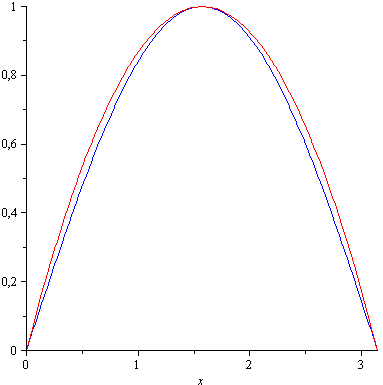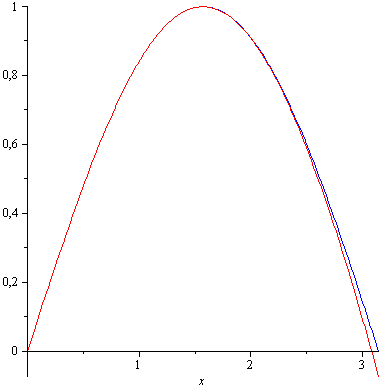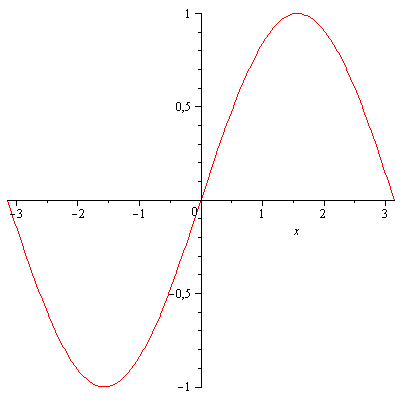The accuracy and speed of function approximations
The hard truth of function approximations is that they are not very accurate – that is why they are called approximations (duh). But just how accurate are the different approximations? Here I will take a look at the accuracy of the different sine function approximations.
First off, what exactly are we going to approximate? Let us take a look at the sine function in a graph:
The X axis goes from –π to π.
Let the approximation begin. We start out with a polynomial approximation. We simply use a quadratic equation to approximate the curve of the sine function as best as we can. I came across a post where a guy used –π, -π/2, 0, π/2,π as points of reference and derived a function from that. He came up with:
Without getting too much into the details, this quadratic equation only approximates the curve of the interval [0 ; π]. Putting this equation into a graph with the real sine function gives us this:

Blue is our sine function and red is our quadratic equation. As you can see, the quadratic function is exact in 0, π/2 and π. Now let us have a look at the good old Taylor Series approximation of sine:

Blue is our sine function and red is our Taylor series. Pretty neat huh? It is impossible to tell the difference between the two functions from the interval [0;π/2], but then it starts to deviate. Suffice to say that that we can see from our results that the Taylor series approximation is more accurate – or is it? Stay tuned for part 2.
Update: part 2 is here



Comments
Post a Comment